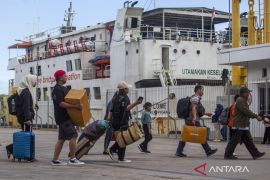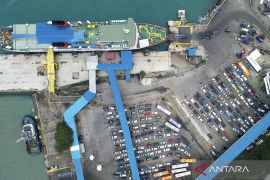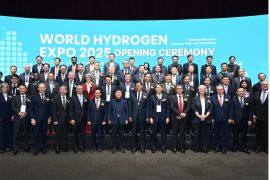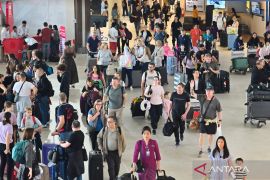Senior partner at Credo, a business consultant firm based in London, Chris Molloy said here during the World Cities Summit 2014 at the Marina Bay Sands residents of Jakarta were spending 23.5 percent of their GDP per capita on transportation costs.
According to the National Statistic Agency (BPS), Indonesians annual GDP in 2013 was Rp33.5 million (around 2,900 United States dollars).
Whereas, "the most efficient economic cost of transport is about 10 percent of the GDP per capita," Molloy said.
The study "The Mobility Opportunity " conducted by Credo and commissioned by Siemens studied the transportation networks in 35 major cities around the world and assessed how prepared cities were to meet future challenges, including population growth and higher competition.
Copenhagen, Denmark, was the most cost-efficient city with 8.6 percent, followed by Singapore with 8.9 percent and Santiago, Chile, with 10.8 percent.
The three have similar metro rail-based transportation services, which were able to meet the current demand with minimal crowding and offered a high level of user functionality.
The clear future plans to expand the metros with new lines to help meet future demand and an improvement in technology also contributed to the transportation efficiency.
Meanwhile, the people in Lagos, Nigeria, were spending the most money than the others, with 27.7 percent.
Molloy said although the Jakartas government had invested in a bus rapid transit network in an attempt to build low-cost capacity, it was not enough to accommodate its commuters.
"It is good as a short-term plan," Molloy said, adding that by increasing the fleet of vehicles only was not enough to keep up with the growing number of commuters.
"For Jakarta, a rail metro-based transportation system is the best. There is no substitute for that," he said.
The current mass transportation means cannot overcome the severe level of congestion in the city. "The minibus transport is currently well organized as well," he said.
The number of commuters in Jakarta is expected to rise from 1.5 million to 2.5 million during the morning peak rush hour by 2030.
According to the study, Jakarta can derive an economic benefit of up to 8.9 billion United States dollars per year by 2030 if it upgrades its transportation networks to world class standard, while the annual value of the opportunity is about 3.3 billion United States dollars.
All cities can learn from the leading cities to close the gap of their transport networks efficiency, reduce costs and increase productivity.
The study shows that investment in rapid rail and bus rapid transit networks is strong evidence that the city is ready to invest and plan for the long term.
Meanwhile, Roland Busch, CEO of the Siemens Sector Infrastructure and Cities, said the best transportation systems are the ones that move people quickly, easily and comfortably to their destination.
The leading cities are already achieving this with efficient transport networks that feature modern infrastructure, with easy connections across various modes of transportation.
Above all, they have a clear strategy of how to meet future needs, Busch said. (*)
(A059/b003/B003)
Reporter: Aditya E.S. Wicaksono
Editor: Fardah Assegaf
Copyright © ANTARA 2014











